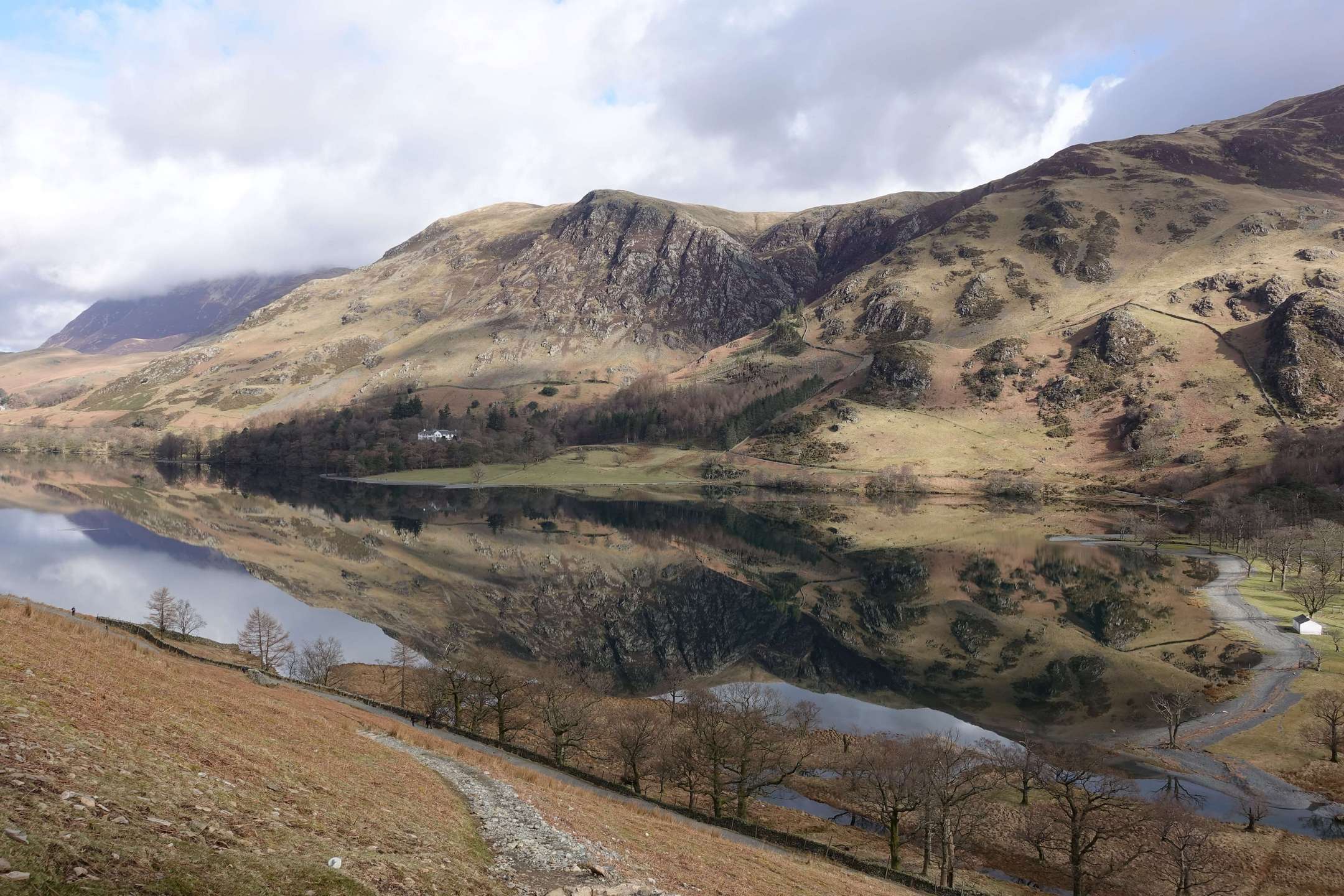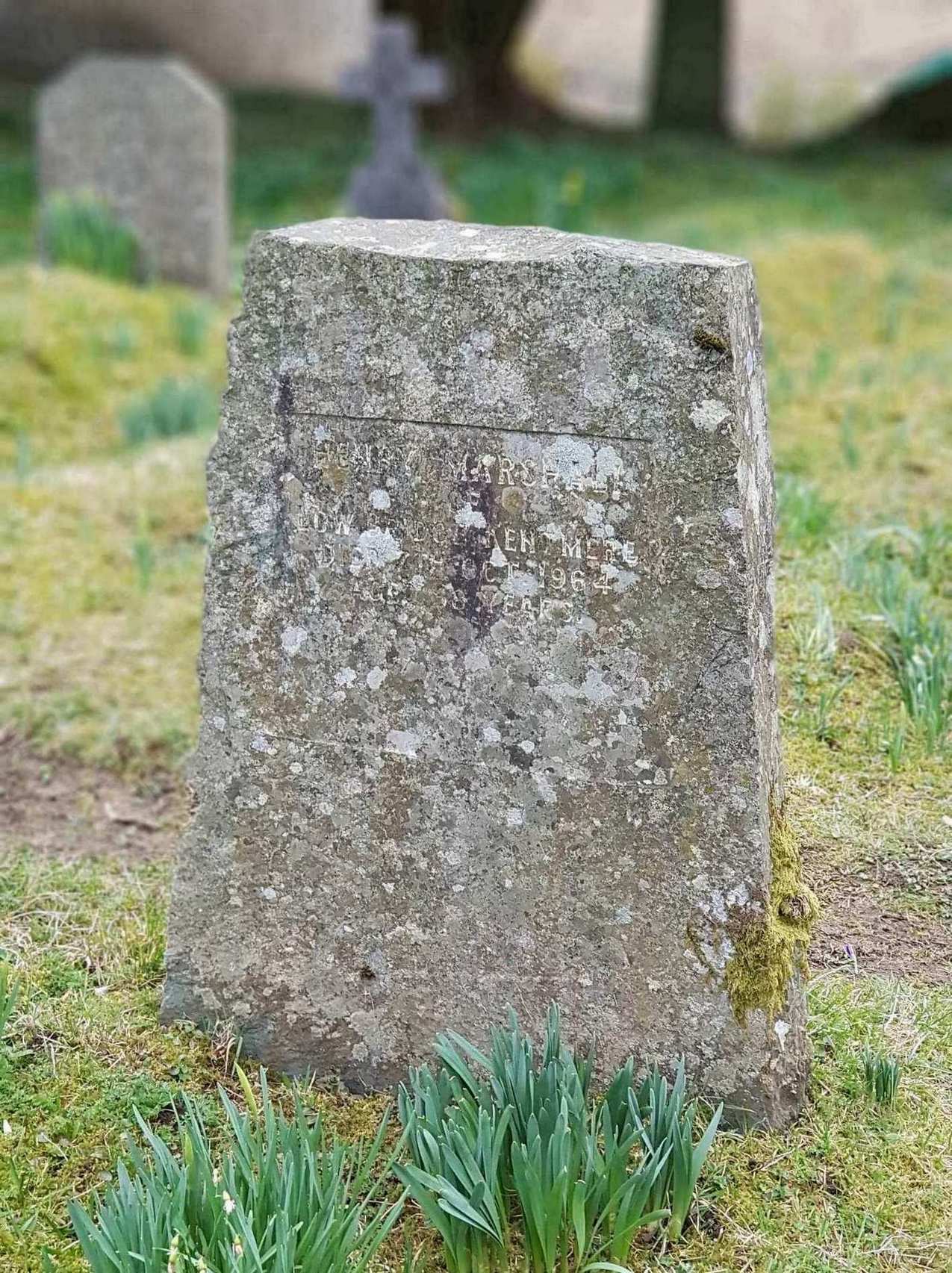Henry Marshall
Article by Chris Butterfield
My journey compiling Alfred Wainwright’s complete publishing and printing history has led to numerous discoveries and the acquisition of rare books. Part of the collection includes several early Lakekand Pictorial Guides. Several of these early impressions were different because they had all their publishing details altered. The Westmorland Gazette had covered the previous publisher’s name, Henry Marshall, with a sticker. Why Henry was removed as a publisher so quickly is not completely clear. Hunter Davies later publicised this modification in Wainwright: The Biography (1995).
The story behind this begins with Wainwright’s first guidebook, The Eastern Fells, completed in 1955. Initially inclined to self-publish, Wainwright was advised against it by Kendal librarian Henry Marshall, who advised that acting as both author and publisher would not be wise. Henry subsequently became his publisher. Wainwright preferred Henry’s name to his own, so everything worked out perfectly. To print the initial 2000 copies, Wainwright struck a deal with the small local printers Bateman and Hewitson Ltd. Due to their limited capacity, the Gazette was subcontracted to print the books.

The first book’s engravings were completed in Manchester, not at the Gazette, as later volumes incorrectly stated. Despite this, all the books erroneously credited the Gazette for engraving. Surprisingly, to date, no Kendal printer has ever possessed engraving equipment.
As the series advanced, book sales surged. Henry, tasked with the challenging role of managing all sales and distribution, faced significant pressure. However, a major change was imminent. The 1962 publication of The Northern Fells guidebook marked Henry’s last involvement in the series. In a sudden and unexpected move in 1963, Wainwright transferred all publishing rights to the Gazette, leaving Henry out of the picture.

In 1963, Wainwright sold the entire stock of existing books to the Gazette for £753. The Gazette then covered Henry’s name on all the books with stickers bearing their own name as the publisher. This act must have been devastating for Henry upon discovering it. Reflecting on this, Wainwright commented in his 1966 biography, Fellwanderer: The Story Behind the Guidebooks, regarding Henry’s role in publishing: “…subsequently this arrangement collapsed through the weight of numbers.”

Wainwright’s decision to proceed without discussing it with Henry created a significant rift, evidenced by Henry’s heartfelt letter expressing his disappointment. This incident highlights Wainwright’s complex character, suggesting that while he may not have intended to harm Henry, his actions inadvertently did so. I believe there is always a trade-off with specially gifted people. We wouldn’t have these fantastic literary works of art we all know and love today if Wainwright hadn’t been the enigmatic and antisocial character we knew him to be.


Henry Marshall was buried at St. Cuthbert’s Church in Kentmere. I had never been to Kentmere before, so I wasn’t sure what to expect. Kentmere is a beautiful valley, and we didn’t want to leave. We arrived a few hours later and parked near the church. It was just as quiet and peaceful here as it was on Haystacks. After a few minutes of looking through all the old graves, I eventually found the graves of Henry, his wife, Edith and his son, Roger. I spent some time by Henry’s grave to pay my respects.
Shortly after acquiring the altered guides, it prompted me to pay my respects to both Wainwright and Henry. It was a glorious summer’s day when my wife Priscilla and I climbed Haystacks to where Wainwright’s ashes were scattered by Betty all those years ago. We were alone with the feeling of peace and tranquillity by Innominate Tarn. You instantly knew why Wainwright wanted to be here. An hour later, we slowly made our way back down to Buttermere.


While collecting Wainwright’s work, it’s always been more than just the raw materials that make a book. It’s the human stories behind each title that resonate with me. The complex history behind the books has encouraged me to recount previously told tales and unearth new ones.
Back to top of page

